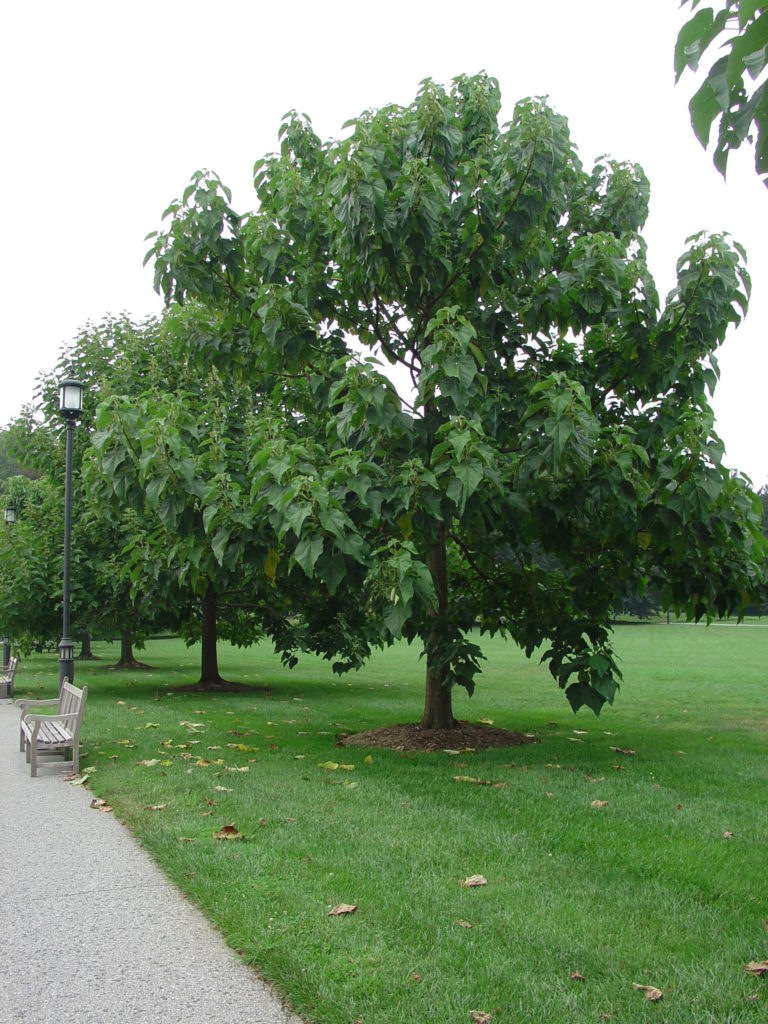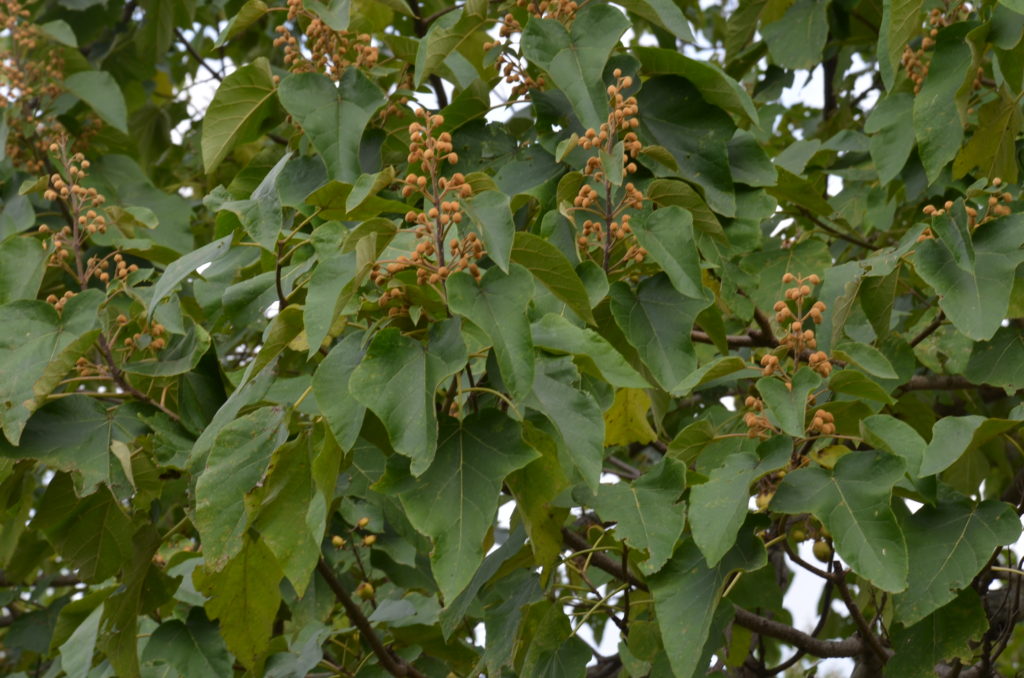Empress tree (Paulownia tomentosa) is a fast-growing shade tree, in some years adding 4-5 feet of new growth, eventually to reach heights of 40-50 feet and width of 20-30 feet in less than 20 years.

In the first 3-4 years, juvenile trees develop enormous size leaves. Once trees start producing flowers (adult stage), leaves are alot smaller, although still bigger that most oaks or maples. Some gardeners create the tropical foliage appearance by cutting back young trees every 1-3 years to maintain enormous sized leaves. By doing so, they avoid flower formation which results in seeds and lots more sapling trees in the neighborhood.
Showy upright clusters of lavender flowers measure 14 or more inches across and are beautiful, although most are hidden within the bulky spring foliage. The large, velvety looking leaves resemble catalpa tree leaves.

Individual 1.5-2 inch long tube-like blooms are vanilla scented and edible. Woody brown seed capsules follow in the fall; the capsules split open to reveal winged seeds.
Paulownias are not recommended for landscape planting as they are considered short-living weedy trees. They survive in a range of soils including low fertility and high acidity sites, and either in partial to full sun. As a shade tree, it forms a wide canopy of dense shade, creating too much competition for most ground covers to survive. Paulownia is resistant to most urban air pollutants.
Insects, Diseases, and Other Plant Problems: Frost damage to early spring flower buds is possible. Plant experts rate paulownia trees as weedy, messy, weak wood and invasive species. Seed heads form in summer and the ripened seed fall in late October. According to University of Tennessee forestry experts: “some 90% of paulownia seeds are not viable, yet many states list the tree as invasive”.
In Asia, paulownia wood is manufactured into paper, veneer, hand-carvings, clogs, musical instruments, furniture, rice pots, water pails, bowls, and spoons. Some U.S. growers export the wood to Asia. It has also some medicinal uses in Asia.

 Posted in
Posted in 
